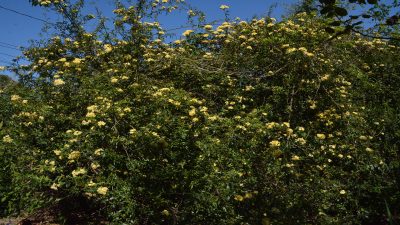Mountain Cedar: Why to Love the Tree You Love to Hate
encore date: January 9, 2021
original air date: January 19, 2019
Achoo! Do mountain cedars make you see red? Hey, they’re just doing their job like other trees, grasses, and wildflowers. Landscape designer and ecologist Elizabeth McGreevy explores their value to our holistic ecology, ways to alleviate allergies, and how to prune for fire safety. Watch for her tell-all book in August 2019, Wanted! Mountain Cedar: Dead and Alive! On tour in cedar country, artist Claudia Reese of Cera-Mix Studio respected her native plants when she built her compressed earth house and rainwater collection, detailed with her signature mosaic designs. Weather swings from record highs to frosty temps make winter tricky for plants: Daphne explains why. Plus, find out how to grow drought-tough, easy-care screening Lady Banks rose. Make free plants with Herb n’ Cowgirl Ann McCormick’s demo on propagating woody stemmed plants!

